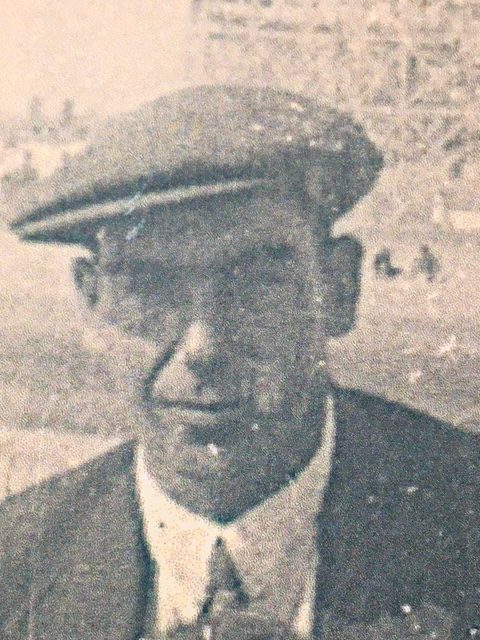Yates, Thomas George - P8972
Family History Researched by Paul Burkitt
Thomas George Yates was born February 11th 1900 in Brimington in Derbyshire. His parents were Thomas George Yates (1878 – 1960) and Isaline Bagshaw (1877 – 1923). Thomas George was a few months old when the 1901 Census was taken. The family were living in Brimington Common and his father was working as a coal miner. On the 1911 Census, Thomas George was 11 years and attending a local school. They were living at 164 South Moor Road in Brimington. His father was still working as a coal miner – hewer. Thomas George, married Gladys Smith in March 1919, when he was nineteen years of age. Gladys was slightly older. They had five children: Elsie, Alan, George, Ronald and Harold. Thomas George was 38 year old at the time of the disaster in 1938 and was living at 5 Poolsbrook Cottages in Poolsbrook. He was employed as a timber drawer. He was buried in Brimington Cemetery on 14 May 1938.
Two years after the disaster, the relatives of Thomas George placed ‘In Memoriam’ notices in the ‘Derbyshire Times and Chesterfield Herald’
Treasured memories of a dear husband and father,
What would I give to see his face,
And see him smile again.
Never will his memory fade,
While our love does still remain.
From Wife and Family. Poolsbrook.
“We’ve been lonely since he left us,
Home has never been the same,
All this world would be like heaven,
To have our father back again.
From the boys.
1938 – MARKHAM COLLIERY DISASTER
The men on the night shift went to work as usual on Monday 9th May 1938 not knowing that by the end of that ill fated shift more than two thirds of them would be dead or seriously injured. At 5.30 am the shift was coming to an end, some of the men had already started to make their way back to the pit bottom. This was the Black Shale seam, the deepest and the farthest away from the pit bottom – some one and a half miles. In the pit yard the men on the day shift were arriving ready to start work at 6am. Suddenly, underground, a tremendous draft got up followed by a terrific bang. Black coal dust and smoke filled the pit and a wall of fire swept through the seam. There had been an explosion of gas at the coal face. Some tubs carrying coal ran out of control and smashed into an electric joint box causing sparks which ignited the coal dust. 79 men were killed and 38 men were injured. Most of the men were married with young children. All 79 men were buried on Saturday, 14th May in 13 cemeteries.
